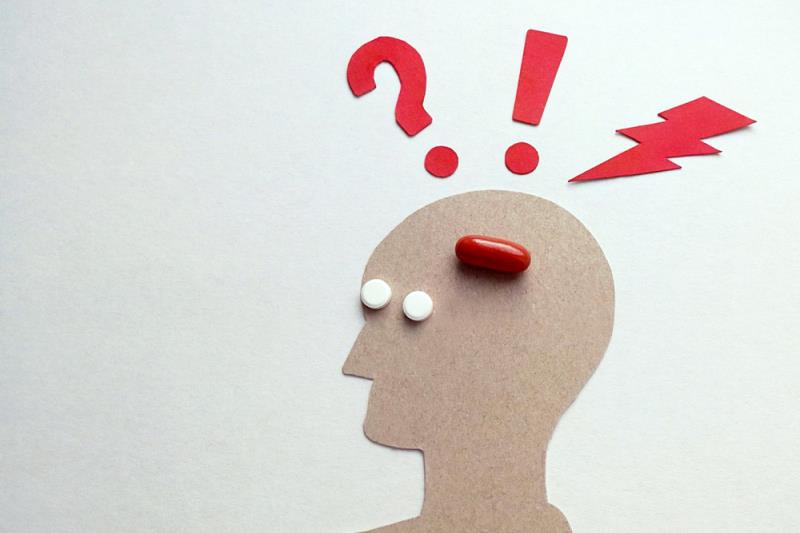
Rimegepant is effective for acute treatment of migraine in patients with a history of insufficient response to triptans and in current triptan users, a post-hoc analysis of three randomized, double-blind, multicentre phase III trials has shown.
The three methodologically similar trials evaluated the efficacy and safety of rimegepant (a single 75 mg dose) vs placebo in acute treatment of a migraine attack of moderate to severe pain intensity. The trials included a total of 3,507 patients (rimegepant, n=1,749; placebo, n=1,758). Among these patients, 910 (25.9 percent) had a history of insufficient response to 1 triptan, 325 (9.3 percent) had a history of insufficient response to ≥2 triptans, 595 (17 percent) were current triptan users, and 1,677 (47.8 percent) were triptan-naïve. [Cephalalgia 2023;43:3331024221141686]
In the two subgroups of patients with a history of insufficient response to triptans, sumatriptan (73–82.5 percent) and rizatriptan (15.4–62.8 percent) were the most commonly involved agents. The most commonly reported reason for insufficient response to triptans was inconsistent relief with oral sumatriptan (70–76 percent) and oral rizatriptan (52–77 percent), followed by slow onset of relief (41–71 percent).
Results showed that rimegepant was more effective than placebo in patients with a history of insufficient response to 1 triptan or ≥2 triptans in the coprimary endpoints of freedom from pain (1 triptan: 20.7 percent vs 12.4 percent; p<0.001) (≥2 triptans: 20 percent vs 10.2 percent; p=0.013) and freedom from the most bothersome symptom (1 triptan: 36.2 percent vs 24.4 percent; p<0.001) (≥2 triptans: 43 percent vs 21.5 percent; p<0.001) at 2 hours postdose.
In current triptan users, rimegepant was also more effective than placebo in terms of both freedom from pain (20.4 percent vs 6.8 percent; p<0.001) and freedom from the most bothersome symptom (37.2 percent vs 22.2 percent; p<0.001) at 2 hours postdose.
Among triptan-naïve patients, rimegepant was more effective than placebo in terms of freedom from pain at 2 hours postdose (19.6 percent vs 14.7 percent; p=0.007). Freedom from the most bothersome symptom at 2 hours postdose did not differ significantly between rimegepant and placebo recipients (35 percent vs 30.7 percent; p=0.06).
For each coprimary endpoint, pairwise comparisons showed no statistically significant differences between the four triptan experience subgroups among rimegepant-treated patients. “These results indicate that a history of insufficient response to 1 triptan or ≥2 triptans does not influence the efficacy of rimegepant,” the researchers noted.
Rimegepant was also more effective than placebo in the key secondary endpoint of pain relief at 2 hours postdose across all triptan experience subgroups (history of insufficient response to 1 triptan: 58.4 percent vs 42.8 percent; p<0.001) (history of insufficient response to ≥2 triptans: 69.5 percent vs 36.6 percent; p<0.001) (current triptan users: 61.8 percent vs 41.3 percent; p<0.001) (triptan-naïve patients: 54.4 percent vs 47.0 percent; p=0.002).
“The preponderance of evidence suggests that once patients have an insufficient response to a triptan, outcomes tend to improve by switching to a different class of medication and worsen by use of a second agent in the triptan class,” the researchers pointed out. [Headache 2015;55:825-839; Headache 2019;59(S1):57-58]
“This study, along with previously published observational data, challenges the rationale for requiring that patients with migraine endure insufficient response to multiple triptans before considering alternative treatments,” the researchers suggested.